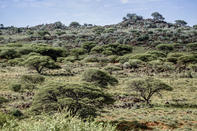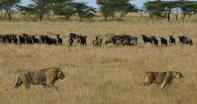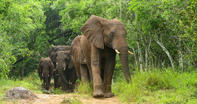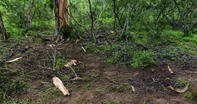Africa of Public Imagination
The savanna of African folklore - with all the drama of its expansive grassy plains and scattered trees - is not some fixed place on the map, some lasting state of comfortable equilibrium.
Rather, it's a transient state of an ever-shifting landscape which, over the millennia, has swung from straightforward grassland to congested forest and back again, along with natural changes in the climate.
Today it stretches up the east coast of the country and along the north-easternmost borders where it joins the classic subtropical savannas further north.
These expanses once grazed a bewildering variety of animals, followed by the fastest and most cunning hunters on the planet. This is the Africa of the public imagination.
Modified Landscapes

Savannahs are paused in their current state of tree-to-grass ratio by a truckload of gardeners. Seasonal rains keep savannahs lush and green in summer. Wintertime drought stress keeps trees struggling to make it into maturity.
Browsing by herbivores also keeps trees neatly trimmed back. Fires, rushing through the tissue-paper combustibility of grass, cut straight through tree seedlings like a voracious weedeater. Only when there are sufficiently long gaps between fires, are young trees able to grow tall enough to withstand the next inferno.
Thanks to fires, the animals of the savannahs can enjoy the relative security of wide, open spaces where they can see long distances and sprint either from danger or towards prey, depending on their position in the food chain. Without fire, particularly in higher rainfall areas, trees crowd in and a whole different suite of plants and animals take over. The role of browsing and fire are accepted agents in the shaping of savannahs.
By Leonie Joubert

